#protecting brassica
Explore tagged Tumblr posts
Text
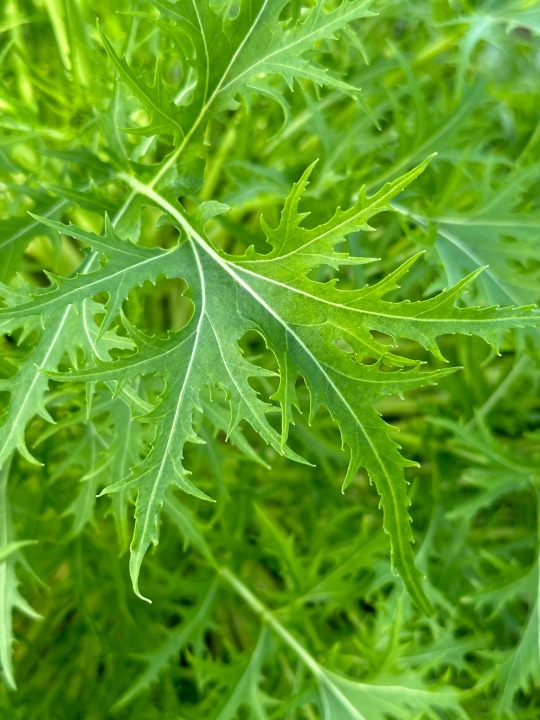
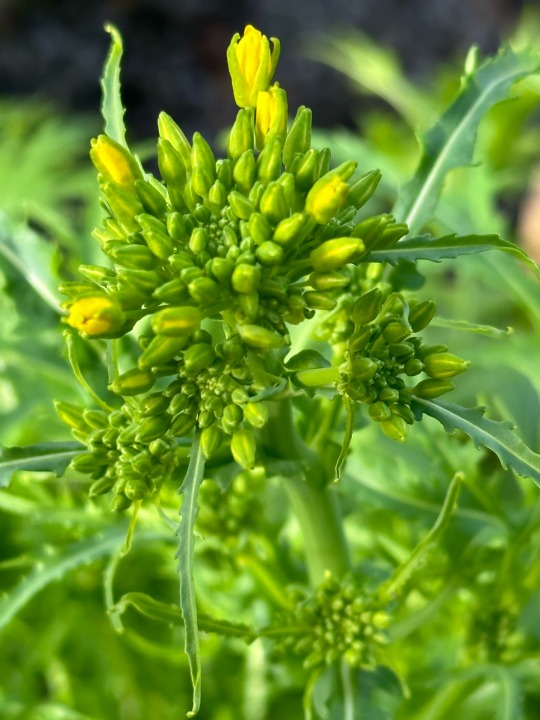
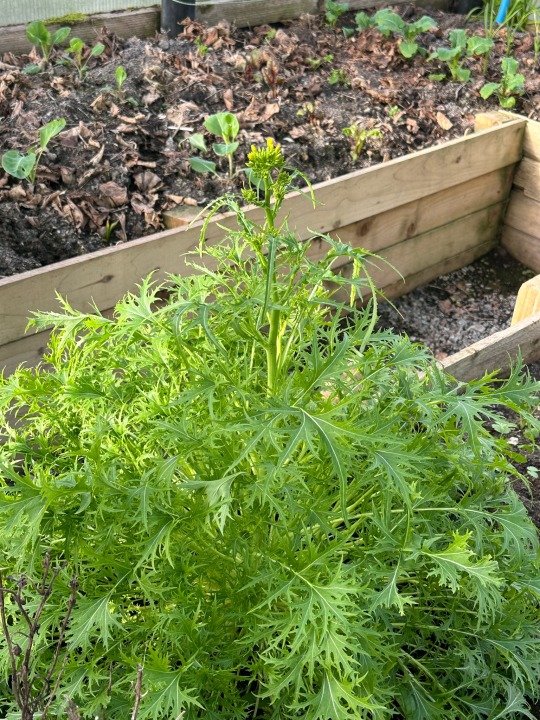
Plant of the Day
Saturday 2 March 2024
A member of the brassica family Brassica rapa var. nipposinica (mizuna, Asian greens, Japanese mustard greens, California pepper grass, spider mustard) can grow with protection through the winter. The feathery leaves have a mild mustard flavour which are sweet enough for salads and older leaves can be cooked like spinach. This biennial plant was in its second year and so was producing flowers.
Jill Raggett
#brassica#mizuna#asian greens#Japanese mustard greens#California pepper grass#spider mustard#plants#horticulture#biennial#polycrub#gardens#productive garden#salad#garden#protective growing#yellow flowers#foliage#edibles
52 notes
·
View notes
Text

this large white caterpillar (Pieris brassicae) was parasitized by a braconid wasp (Cotesia glomerata) whose larvae ate it from inside in typical wasp fashion. the cool part is that instead of simply pupating inside the host, these larvae somehow exit without killing it, spin cocoons next to it, and the caterpillar then protects them. it was visibly displeased with my presence, and would squirm and shake its head at me if i got too close

the caterpillar's behavior is caused by Bracoviriform glomeratae, a virus produced by the wasp. it suppresses the caterpillar's immune system, prevents it from pupating, and forces it to protect the parasitoids, even weaving a silk tent around their cocoons (barely visible in the photos if you zoom in). the caterpillar does die eventually, but this one survived for at least a few days. the wasps made it out much later (or maybe hyperparasitoids did. you know how it is with wasps)
(December 29th, 2023)
#my pics#bugs#entomology#insects#butterflies#cabbage white#wasps#lepidoptera#pieridae#pieris#hymenoptera#braconidae#cotesia#bugblr#animal death
22 notes
·
View notes
Text
By Dr. Faith Coleman
Remember that old saying, “An apple a day keeps the doctor away”? We may need to change that to “Broccoli every day keeps the doctor away.” Earlier this year, there were articles in mainstream media about the benefits of broccoli for relieving arthritis. My search for related literature in the National Library of Medicine – National Center for Biotechnology Information was eye-opening.
Broccoli is a powerhouse of important nutrients, including fiber, vitamins, and minerals. Its natural building blocks include chemicals which are antioxidants, anti-inflammatory, anti-cancer, and antibacterial.
The cruciferous (cabbage family) vegetable Brassica oleracea is an immune-system booster, antidiabetic, liver-protective, heart-protective, and memory-preserving. Its anti-inflammatory and antibacterial properties are synergistic – a powerful combination for better health.
Let’s take a closer look at all the reasons that make broccoli such an amazing food when it comes to health.
Packed with vitamins and minerals
Broccoli is high in antioxidants, including vitamins C, K, and A. It also contains several vital minerals, including potassium, calcium, and iron. These antioxidants help protect the body from oxidative stress and reduce inflammation.
High fiber content
Broccoli is dense with fiber, which feeds a sense of satiety and aids digestion, including emptying the bowels. This quality also reduces systemic inflammation while supporting the growth of healthy microbes in the gut microbiome.
Heart-protective
Broccoli’s antioxidant, anti-inflammatory properties, and fiber content help lower cholesterol and normalize blood pressure. Both are factors that reduce the risk of heart disease.
11 notes
·
View notes
Text
Indigenous knowledge and food sovereignty on the prairies. Native plants and history of farming in the the northern Great Plains. Maskēko-sākahikanihk (Muskeg Lake Cree Nation), Wipazoka Wakpa Oyate (Sioux Valley Dakota Nation), and Piikani First Nation recent approaches to sustainable food production. Bison grazing and grassland health on Piikani land.
---
Indigenous peoples had lived and farmed the area centuries before European contact. [...]
Melissa Arcand is a soil scientist and associate professor at the University of Saskatchewan, and she grew up on a modern grain farm at Maskēko-sākahikanihk, or Muskeg Lake Cree Nation, north of Saskatoon. [...] Saskatchewan has more farmland than any other Canadian province. [...]
The yard is full of trees, including poplars, spruce and Manitoba maples — the fast-growing hardy species that form a protective wind-break around farm yards across the Prairies. Patricia shows me her vast garden on the south side of the yard. She has corn, squash, sunflowers, carrots, peas, flowers and shrubs of haskap and saskatoon berries. [...]
First Nation grain farmers are rare everywhere. In most cases, farmable land on the dozens of First Nation reserves across the plains of Manitoba, Saskatchewan and Alberta is rented out to non-Indigenous farmers who live nearby. That came up as a concern during a forum Arcand organized on Indigenous farming in Saskatchewan in 2018. In forum discussions, attendees resolved to take greater control over farming activities on their lands. [...]
---
Eugene Ross has a slow, soothing voice. [...] Ross is an Elder at Wipazoka Wakpa Oyate, literally “Saskatoon river people”, the Dakota name for Sioux Valley Dakota Nation. It lies at the forks of the Assiniboine and Oak Rivers, 50 kilometres west of Brandon, Manitoba [...].
Entering the plains from the rugged forest landscape of the Canadian Shield feels like dropping through a hatch in the back of a wardrobe. They are completely different worlds. West of the uber-flat Red River Valley, just beyond the town of Austin, the landscape begins to undulate, like a sloppily made bed. From there, the Prairies fold and flatten, roll and settle, in all directions, seemingly forever. Canada has 154 million acres of farmland, according to Statistics Canada’s 2021 census, and 126 million of those are in the Prairie provinces of Saskatchewan, Alberta and Manitoba. [...]
“Our Tylenol back in the day,” he says, pointing to Seneca root. From a ceiling hook, Ross takes down a string of white tubers, each about the size of a big toe: wild turnips. [...]
Production of another oilseed relative, Brassica napus, now the most common species on the Prairies, began in the 1940s. [...] In 1978, this improved crop got a new name: canola. Western Canadian farmers now grow canola on more than 20 million acres [...]. Canola is a cool-season crop that thrives in Western Canadian growing conditions. Ross knows a long list of native plants traditionally used for food and medicine that also thrive in the region. While highly unlikely that any will become the next canola, they could underpin a more diverse farming future. [...]
---
You can see Piikani First Nation from the cliff’s edge at Head-Smashed-In Buffalo Jump in southern Alberta. [...] Today that great green sea, whipped by winds from a cascade of buffalo ghosts and bisected by the Old Man River, is Piikani territory. Noreen Plain Eagle is the land manager for Piikani First Nation and its 106,000 acres. [...]
Food sovereignty is a priority. Piikani’s reliance on outside food became acutely clear in the early days of the Covid-19 pandemic when food companies, overwhelmed by supply chain issues, could not deliver their usual supply. Piikani nearly ran out of fresh food. It was a call to action for Plain Eagle. “We don’t want to be at the mercy of someone else to provide food to our community,” she says. “We want food sovereignty.” [...]
The next phase is to build a greenhouse at the school to produce a wider variety of vegetables. “We will use it as a hands-on teaching tool for students,” Plain Eagle says. “Terminology will be in the Blackfoot language.” [...] Plain Eagle also has plans to grow corn and potatoes for the community, and to think more strategically about the nation’s small bison herd. “Bison have always been part of our history,” she says, “and we’re learning how they can contribute to our grassland health.” Grasslands need a keystone grazer, like bison or cattle, to keep the grass in check and maintain grassland biodiversity. [...]
---
Text by: Jay Whetter. “The true history of farming on the Prairies.” The Narwhal. 8 October 2022. [Bolded emphasis and italicized first paragraph added by me.]
282 notes
·
View notes
Text


i will keep you safe forever / protective sculpture with pieris brassicae and time flies (dragonfly beige and orange with green glitter) by sofie burgaard, handcast plastic with pieris brassicae remains / handcast plastic with glitter, 32 × 45 centimeters, 2022 & 2023
54 notes
·
View notes
Text

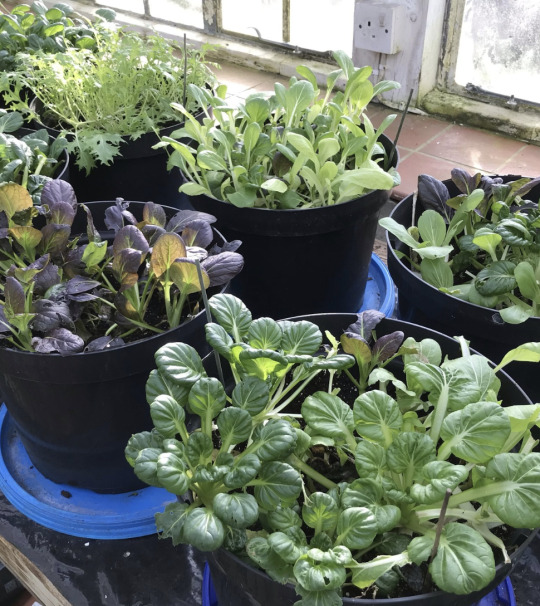

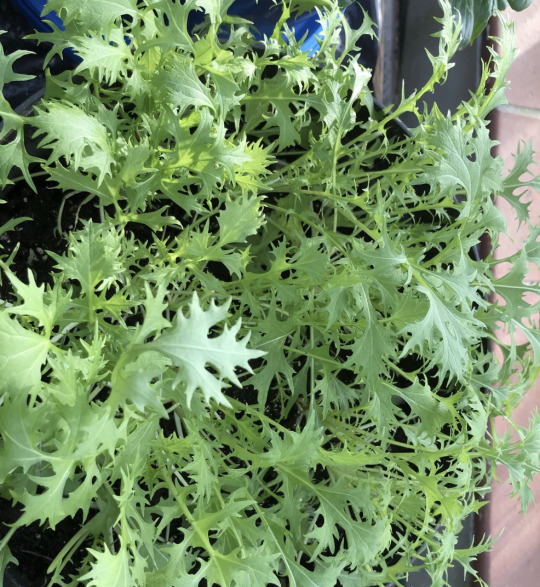
Did you know that certain types of salad plants can be grown year round here in southern England? This is our "leaf table" in the ye olde greenehouse, which supports a variety of fresh tasty salad plants during the winter. By keeping the plants in a greenhouse, they are protected from frost and intense rains. The green "curtains" in the corner are agricultural cloth blankets we place over the pots on the coldest nights. The south-facing side of the greenhouse receives maximum light and warmth on short winter days, helping the plants maintain a slow but steady growth rate. Unfortunately, due to the short day lengths and low temperatures, the plants grow much slower than in the spring and summer so we must harvest them conservatively.
Some garden plant species I recommend for winter salad cultivation are shown in the photos following the main view of the table.
Tat Soi (Brassica rapa var. rosularis) and Pak Choi (Brassica rapa subsp. chinensis). The Tat Soi are the dark green plants with rounded leaves and the Pak Choi are the plants with oval pale green leaves. Both of these East Asian traditional cabbage varieties can be allowed to mature into large plants or picked regularly to keep them small.
Komatsuna (Brassica rapa var. perviridis). This petite cabbage variety comes from Japan and has a crunchy texture.
Mizuna ( Brassica rapa var. niposinica). I was surprised that the spiky Mizuna is the same species as the other leaves. Unlike the mellow leaves, it has a spicy arugula-like flavour. I recently learned that Mizuna is among the plants astronauts have grown on the International Space Station!
Our final plant is NOT a Brassica rapa! This plant is called Miner's Lettuce (Claytonia perfoliata). This dainty plant comes from mountain and coastal regions of North America and Central America, and is named because gold miners in California ate this plant to prevent scurvy, a vitamin C deficiency disease.
#katia plant scientist#botany#plant biology#plants#plant science#greenhouse#gardens#gardening#grow your own food#grow your own#lettuce#mizuna#tat soi#bok choy#asian greens#leafy greens#salad#winter#winter garden#green academia#potted plants#indoor garden#indoor farming#healthy eating
14 notes
·
View notes
Text
Supermarkets and intl farming corporations are evil I think: international trade, refrigeration, and the race for the bottom
nowadays we have refrigeration, freezing, and fast-moving vehicles with these technologies installed. This means that it's now possible to move perishable goods over longer distances.
Up front, seems pretty cool. You can get mangoes in Norway and saltwater fish in deeply-landlocked places. There have been benefits to some people too. Primarily this is with fisheries for desirable catches with a restricted geographic range and no real farms. For example, Nephrops norvegicus is a crustacean that lives in cold water. It is known as scampi† or langousteen when sold as food . As a shellfish, it spoils incredibly quickly, and so is primarily sold in two forms: frozen, and live (to be killed immediately before cooking). Neither of these options would be possible to sell to far-away locations without modern tech, and french desire for high-quality nephrops was the main thing keeping many individual crustacean fishers in Scotland afloat financially (until Brexit happened, and customs slowed down trade enough that live nephrops weren't able to be sold to france, so the fishers had to sell frozen ones for less profit and it's been very not good and pushed a lot of people into poverty , Brexit, babey )
but the Big Thing here is that a lot of foods are not geographically restricted in a way we can't overcome right now. A lot of things can be just fine living somewhere else, but just can't swim across the ocean to get there, etc. Quinoa farms in england, olives in california, cacao in africa, potatoes almost ubiquitous. So when something can be grown wherever and technology means we can ship perishables around the planet no-prob , big supermarkets can now choose where they get their goods from a wide range of options.
And where do they pick? They pick to buy from the cheapest places; the places where environmental + workplace safety regulations don't impose more costs, where the workers are underpaid or enslaved and their wages don't mess with their boss's bottom line. The way a country can attract a big company (and its money) is by crushing unions, allowing slavery, and so on. If a government enforces environmental regulations or minimum wage etc, then the big company moves its operations to a different country. This is the race to the bottom, where countries gain jobs by disenfranchising their people. Sometimes, "structural adjustment programs" and the like are used by companies to say: Hey, financially-struggling country, we'll pay you a bunch of money in exchange for some land & for implementing laws that reduce workers' rights.
& in countries with better workers rights and environmental protections, jobs evaporate into thin air as supermarkets by goods elsewhere.
Who benefits? only the higher-ups in these companies, buying goods at the lowest possible cost, and then selling them at a huge profit margin in countries where the living costs are different. Buy one chocolate bar in exchange for the money a cacao-picker may earn in a day of backbreaking labor.
-
I live in a less-populated country where low-density urban centers are surrounded by farms.
On the bus ride to the hospital i saw fields of oilseeds, edible brassicas, strawberries, potatoes ... sheep and cow pastures ... forest-banks grown lush from the high-latitude midnight sun, full of wild edibles.
In town center there is one store that sells local goods, only meat.
I go to the store and the produce is sourced from despotic regimes and countries implicated in human rights abuses and forced labor. fresh vegetables cost money people don't have. health issues from insufficient nutrition are chronic and frequent. the supermarket CEOs have multiple mansions.
-
the Brazilian city of Belo Horizonte established ABasteCer markets, land in prime (town central) locations where proprietors could bid to run the market; certain important foods such as fresh vegetables would be sold at a fixed, lower price, while buying the goods from farmers for a higher price, while others would be sold as normal. While the fixed-price foods didn't have a profit margin, the proprietors didn't have to worry about rent , & the unfixed foods provided enough of a wage for them.
Local farmers got paid more, exploitation elsewhere avoided. Lower prices meant poor people could buy important foods, nutrient deficiency dropped.
i wonder how much fighting it would take for such a thing to be established elsewhere in the world . Shall we?
-
† note that if its Cheap then they're probably lying and selling you intensively-farmed Litopeneaus prawns ... these are implicated in ecological problems such as mangrove destruction.
-
World Hunger: 10 Myths. Frances Moore Lappé and Joseph Collins, 2015.
4 notes
·
View notes
Text


February in the garden…it’s time to start seeding brassicas like kale and collards where I live. But my collards from last year survived the entire winter without any sort of protection like agricultural cloth and hoops. I don’t think I grew kale last year or it might’ve survived as well, especially hardier varietals like Russian. And I found this forgotten beet that survived the cold…it will get a place of honor in tonight’s dinner. Spent an afternoon going through my disorganized seed stash and drawing up a seeding schedule for this year. So very excited to get back out there and cannot wait for TOMATO SEASON
7 notes
·
View notes
Text




Plant of the Day
Saturday 31 December 2022
At Inverness Botanic Garden, Scotland, it was great to see the landrace variety of Brassica oleracea Shetland cabbage (Shetland kale) being grown. This has been cultivated on the Shetland Islands since at least the 17th century adapting over time to the conditions. Plants were raised as seedlings in a plantie crub or crö, a small circular stone-walled enclosure. These were then transplanted into larger kale yards, often with protective stone walls. The heads of this variety are quite open with the green leaves becoming tinged pink-purple which deepens as winter progresses. The leaves have a peppery taste.
Jill Raggett
#brassica#Shetlandcabbage#Shetlandkale#cabbage#kale#landrace#plants#productivegarden#vegetablegarden#vegetable#writtledesign#gardens#horticulture#garden#inverness#scotland#botanicgarden#botanic#InvernessBotanicGarden#edibles
93 notes
·
View notes
Text
Gardener shares easy method to protect your growing veggies from hungry pests: 'Great news for me and my garden'
2 notes
·
View notes
Text




Spent some time this morning in the garden with one of my very favorite edible plants; Borago officinalis, borage, "starflower." The blooms taste a bit like honeyed cucumbers, and are gorgeous dried for a tisane or dropped fresh into a lemonade, topping a salad, scattered across a cake, pressed and baked into cookies. The fuzzy leaves are also edible, though the hairs on a raw leaf can be a bit irritating and so they're more likely to be dried and used for tea or cooked like spinach or chard.
It's very popular with pollinators from solitary bees to hummingbirds, and it's very common to see it full of butterflies.
Planting it beside your tomatoes or your brassicas not only makes those plants happier due to the companion effect (borage improves the soil where it grows), but also protects your vegetables from some predators, either through confusing insects like the the hawkmoth whose caterpillars can rapidly decimate a tomato plant, or through attracting predatory wasps which prey on those caterpillars.
Plus it's just, like, really pretty.
#fox garden#fox writes#foxwrites#my actual life#gardening#flowers#garden#flower#this is not cottagecore
9 notes
·
View notes
Text
{so FROM MY RESEARCH LATELY on desert crops and stuff that could probably grow decently well on no man's land, but that requires me to do a little more reading on the specifics and unfortunately i am not really knowledgeable enough about crops or how two suns would affect things so i'm fuckin winging it here}
{here's a list of things that could potentially grow without requiring a lot of like, gene modification from SEEDS folk}
nightshade family plants (tomatoes, peppers, eggplants, potatoes, etc)
cucurbitaceae family plants (melons, cantaloupe, cucumbers, zucchini, summer squash, pumpkins, butternut squash)
corn, maize (not really used for food but i'll still list it here)
beans
arugula, swiss chard, spinach, mustard, crinkle cress, kale (in the winter)
root plants (turnips, beets, potatoes, parsnips, carrots, garlic) do well in the winter too
brassica plants do alright if you protect them from the wild temperature swings in deserts
date palms
palms in general
millet and sorghum
{i may add more to this later but this seems like a good list to start off with that i find pretty interesting to have all listed off}
{mostly i'm putting this together to get an idea of what we'd be leaning towards food-wise on no man's land if you relied less on Plants tbh? i still haven't figured out how Plant generated stuff works into this yet}
4 notes
·
View notes
Text
What vegetable grows best in the fall?
Many vegetables thrive in the cooler temperatures of the fall season. Here are some vegetables that grow best in the fall: Lettuce: Various lettuce varieties, including leaf lettuce and romaine, thrive in the cooler temperatures of fall. They can be grown in containers or garden beds. Spinach: Spinach is a cold-hardy leafy green that does well in the fall. It's rich in vitamins and minerals and is perfect for salads or cooking. Kale: Kale is another cold-tolerant leafy green that becomes sweeter after a frost. It's versatile and can be used in salads, smoothies, or sautéed dishes. Swiss Chard: Swiss chard is a hardy green that can be grown well into the fall. Its colorful stems and leaves make it an attractive addition to the garden. Broccoli: Broccoli is a cool-season crop that produces well in the fall. It's packed with nutrients and can be enjoyed in various dishes. Cabbage: Cabbage is a cool-weather vegetable that thrives in the fall. It can be used in slaws, soups, or sautéed with other vegetables. Carrots: Carrots can be planted in late summer for a fall harvest. Cooler temperatures improve their flavor, making them sweeter. Radishes: Radishes are quick-growing and perfect for fall planting. They add a crisp and peppery bite to salads. Beets: Beets are cold-hardy root vegetables that can be planted in late summer for a fall harvest. Both the roots and the greens are edible. Turnips: Turnips are versatile root vegetables that grow well in cool weather. They can be roasted, mashed, or used in soups. Brussels Sprouts: Brussels sprouts are a cold-tolerant brassica that can be harvested throughout the fall and early winter. They become sweeter after a frost. Cauliflower: Cauliflower is another member of the brassica family that grows well in the fall. It can be used in a variety of dishes, from roasted cauliflower to cauliflower rice. Arugula: Arugula is a peppery green that thrives in cooler temperatures. It's great for salads and sandwiches. Garlic: Fall is the best time to plant garlic for a summer harvest. It requires a period of cold to form bulbs. Onions: Onions can be planted in the fall for a spring harvest. They are cold-tolerant and easy to grow. Remember to check your specific growing zone and climate conditions for the best timing and varieties to plant in the fall. Additionally, providing protection from early frosts with row covers or cloths can extend your fall harvest season for these vegetables. Read the full article
3 notes
·
View notes
Text
Þe shrine to Decay, Þe Flying Spaghetti Monster, and Brassica Prime:






Added rosemary, sage, some form of crystal (all at mom’s insistence) and twenty bucks (from me) for protection.
1 note
·
View note
Text
Randall Randy Konsker Reveals the Science Behind Crop Rotation

Crop rotation has been used for centuries to enhance soil health, control pests, and improve crop yields. However, it’s not just a traditional practice, it's rooted in science. Randall Randy Konsker, an expert agricultural consultant, explains how crop rotation works and why it’s essential for sustainable farming. His insights offer farmers practical ways to use crop rotation as a strategy for long-term soil productivity and resilience.
Understanding Crop Rotation: What Makes It Effective?
At its core, crop rotation involves growing different types of crops in a planned sequence on the same piece of land. The science behind this practice lies in the unique way each crop interacts with the soil and the surrounding environment. Some crops replenish essential nutrients, while others deplete them. By rotating crops with varying nutrient needs and growing patterns, farmers maintain balanced soil health and reduce the risk of soil exhaustion.
Additionally, crop rotation disrupts the lifecycle of pests and diseases. When the same crop is planted repeatedly, certain pests and pathogens thrive, leading to infestations. Rotating crops with unrelated species prevents these threats from establishing themselves, reducing the need for chemical pesticides.
Boosting Soil Fertility Naturally
Konsker emphasizes the role of legumes such as peas, beans, and clover in nitrogen fixation. Legumes host beneficial bacteria in their root systems, converting atmospheric nitrogen into a form that plants can use. Rotating legumes with crops like corn or wheat helps replenish nitrogen in the soil, reducing the need for synthetic fertilizers.
Different crops also access varying layers of soil nutrients through their root systems. For example, deep-rooted crops like sunflowers pull nutrients from lower soil layers, while shallow-rooted vegetables focus on the upper layers. This natural nutrient cycling prevents the depletion of any one soil layer and promotes overall soil health.
Managing Weeds and Pests with Rotation
By varying crop types each season, farmers can limit the spread of weeds and pests. Konsker explains that certain crops, like cereals, outcompete weeds by shading the soil and preventing their growth. In contrast, crops such as potatoes require more weed management but benefit from preceding crops that suppress weeds. Strategic crop rotation helps farmers reduce herbicide use while keeping their fields manageable.
Rotation also interrupts the life cycles of common pests. For instance, rotating brassicas (such as cabbage) with grains prevents soil-dwelling pests from building populations year after year. These natural controls reduce the need for chemical interventions, leading to healthier crops and ecosystems.
Creating a Crop Rotation Plan for Success
Konsker advises farmers to design crop rotation plans tailored to their farm’s unique conditions considering soil type, climate, and market demands. A well-planned rotation not only improves yields but also protects the land from erosion and nutrient depletion, ensuring long-term productivity.
Conclusion
Crop rotation is more than a tradition; it’s a science-backed strategy for sustainable farming. With Randall Randy Konsker’s guidance, farmers can leverage the benefits of crop rotation to enhance soil health, manage pests naturally, and improve profitability. His expertise ensures that crop rotation remains a vital tool for modern agriculture, balancing productivity with environmental responsibility.
0 notes
Link
Primanest Whitening Birdnest UV Cream Primanest Whitening Birdnest UV Cream is the facial nourishing cream mixed with Real Bird's Nest Extract to balance out collagen in skin cells. Formulated with Brassica Napus which is a botanical extract and Alpha-Arbutin, it helps restore radiance, and reduces melanin production which is the cause of melasmas and freckles. In addition, Sodium Hyaluronate helps maintain moisture to skin and protects skin from harmful UV rays. - https://www.thaibestsellers.com/product/primanest-whitening-birdnest-uv-cream/?feed_id=32899&_unique_id=66aada7b96fa7
0 notes